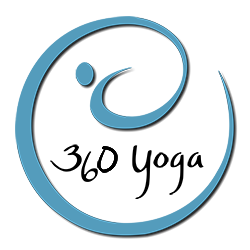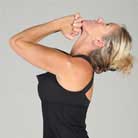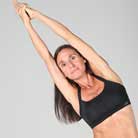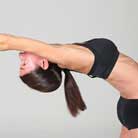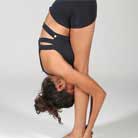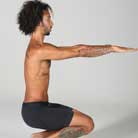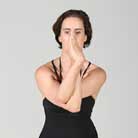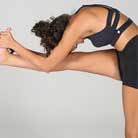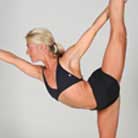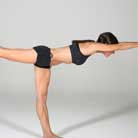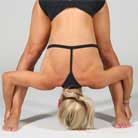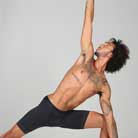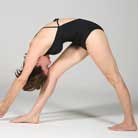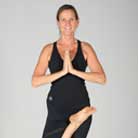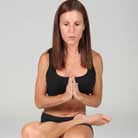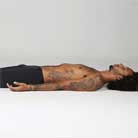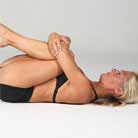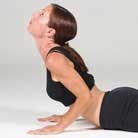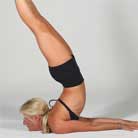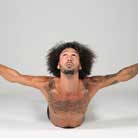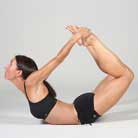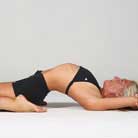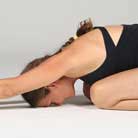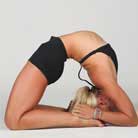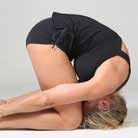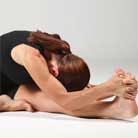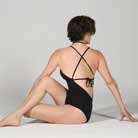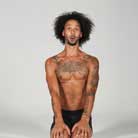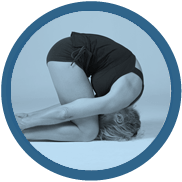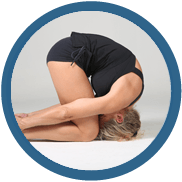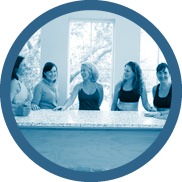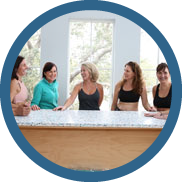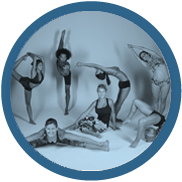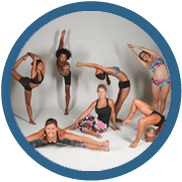
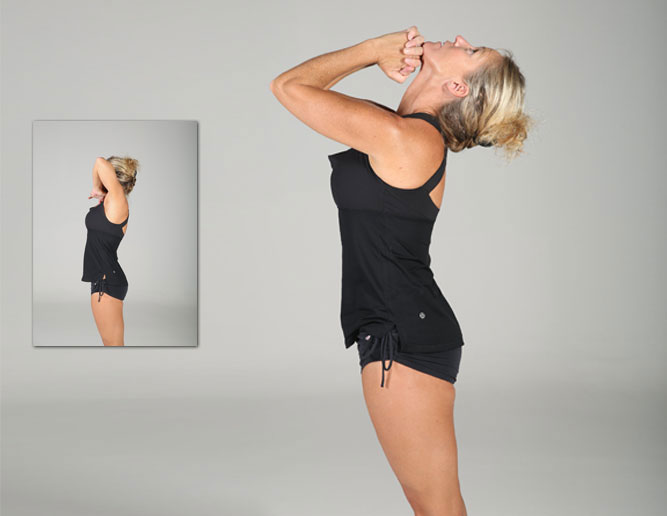
Standing Deep Breathing
Pranayama
Class starts with this breathing exercise. The lungs alternate between full, maximum capacity and completely empty, as the head and arms move.
Pranayama begins to warm the body from the inside, increases circulation and prepares the body for the 26 postures.
Tip: Keep legs strong and stomach in.
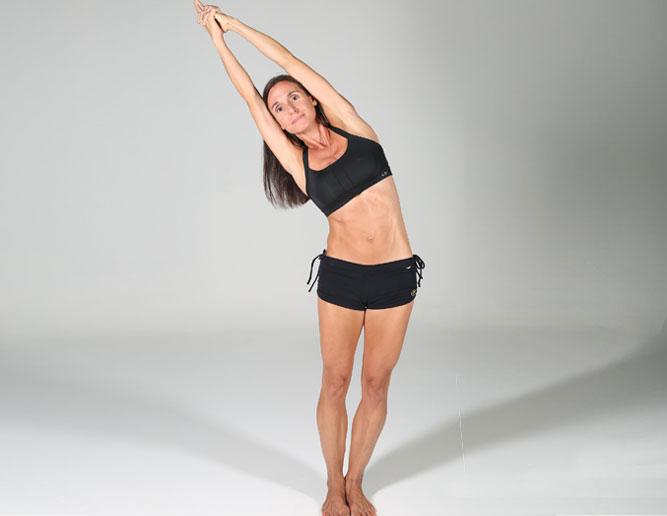
Half Moon
Ardha-Chandrasana
Half Moon posture stretches and warms up the spine in 3 directions, right, left and back. The goal is lateral flexion of the spine in a continuous arc from heels to fingertips. Legs and hips stay contracted, core is strengthened. Shoulders, elbows and pelvis become more open.
Tip: Keep hips and shoulders square to prevent twisting. Initiate the stretch with the hips.
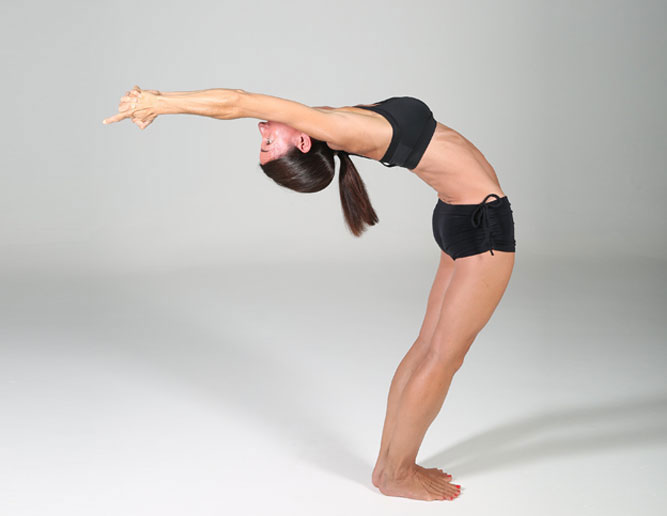
Back Bend
Compression of the back side of the spine, stretching of the frontal spine. Opens hips, chest, shoulders and neck. Counteracts the forward bending most people do all day. Hips push forward, upper body, head and arms push backward.
Tip: Keep breathing shallow sips of air from the chest. Tighten hips and relax abdominals.
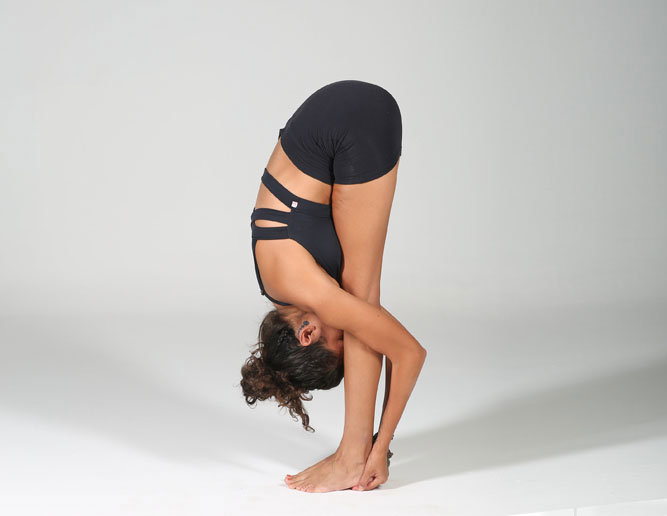
Hands to Feet
Pada-Hastasana
Deep forward bend. Stretches legs, strengthens arms, and increases length and flexibility of spine.
Tip: Use arm strength to pull on heels and lengthen spine.
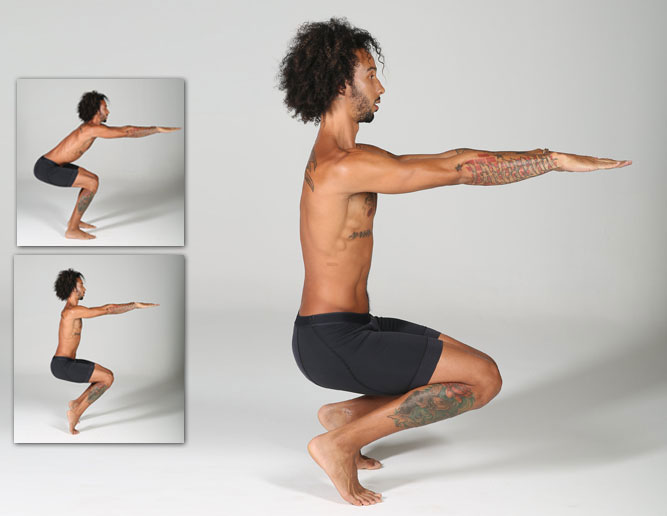
Awkard
Utkatasana
Three-part strength posture. Strengthens gluts, quads, knees, calves, ankles and feet.
1st Part: Uses large leg muscles, begins to raise heart rate, tones. Drop hips until thighs are parallel to floor. 2nd Part: Balancing posture, requires deep focus. Strengthens knees, ankles, toes. Come as high on toes as possible, keep spine straight.3rd Part: Slow moving strength, balance posture. Knees together tight, spine stays straight. Lower until hips are just above the heels.
Tip: Keep breath calm and even, through the nose, as heart rate begins to rise.
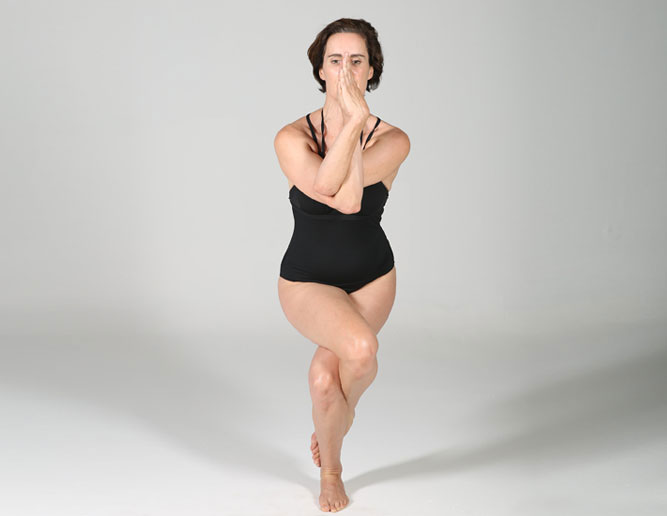
Eagle
Garurasana
Compression, strength and balancing posture. Compresses and flushes the major joints of the body: shoulders, elbows, wrists, hips, knees and ankles. Compression of the lymph nodes in shoulders and hips. Sitting position strengthens legs, balance strengthens the core.
Tip: Keep eyes steady on one point of focus to aid balance.
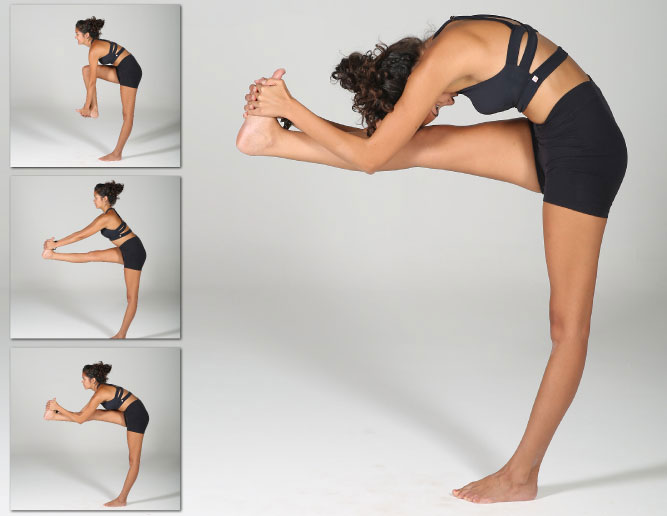
Standing Head to Knee
Dandayamana-Janushirasana
Intense strength, flexibility and balancing posture. Strengthens all muscles and tissues surrounding the knee, quads, abdominals and biceps. Increases hamstring flexibility. Develops concentration, determination, patience and self-control. Raises heart rate.
Tip: This is a step-by-step posture. First and throughout: Lock the knee.
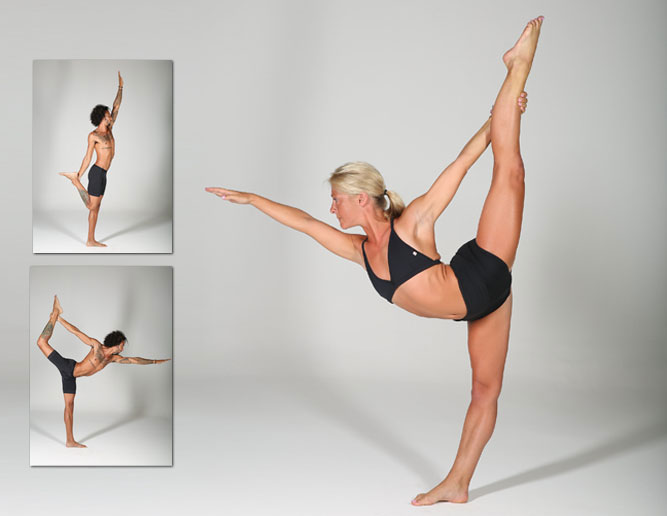
Standing Bow Pulling
Dandayamana-Dhanurasana
Beautiful, fun and challenging balancing posture. Strengthens legs, gluts and hips. Tones arms. Increases flexibility of lower spine. Improves range of motion of shoulders. Keeps heart rate up. Expect to fall out … and then get right back in!
Tip: The kick drives the posture, initiating the back bend, and the forward tilt from the hips.
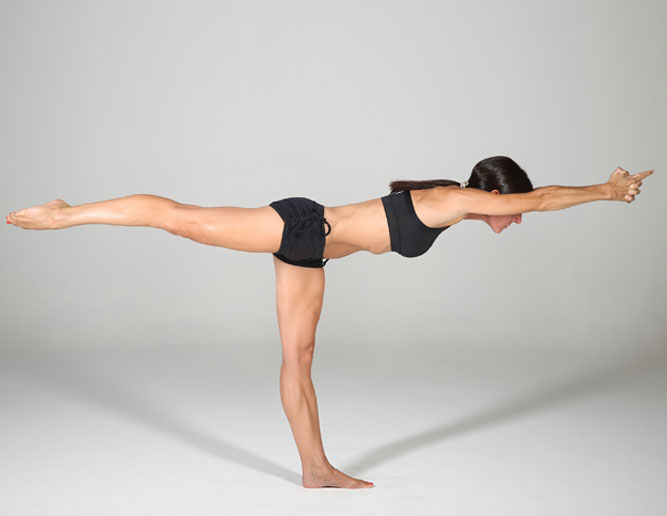
Balancing Stick
Tuladandasana
Strong cardio posture which strengthens legs, gluts, shoulders, arms and abdominals. Quick and intense, raises heart rate. Stretches and decompresses entire spine. Improves balance.
Tip: Lengthen the entire body as if being pulled apart in opposite directions.
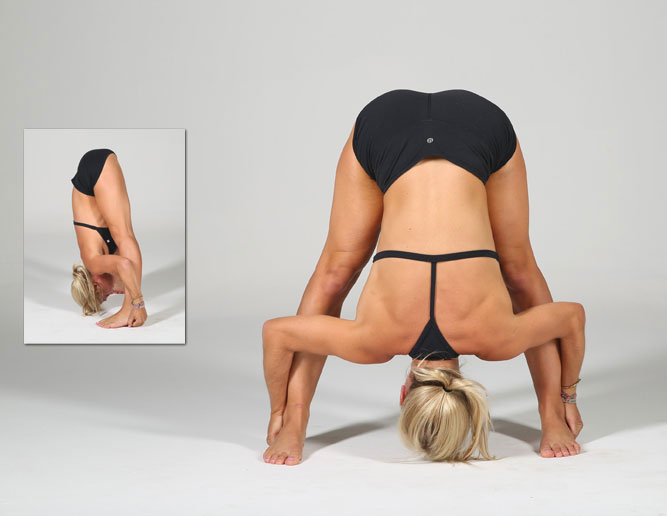
Standing Separate Leg Stretching
Dandayamana-Bibhaktapada-Paschimotthanasana
Stretches legs, hips and spine. Inversion posture flushes blood to the brain, heart, facial skin, and sensory organs above the heart. Releases tension in lower back muscles.
Tip: Keep weight forward on toes, and knees locked to avoid excessive pressure on back of the knees.

Triangle
Trikanasana
Master posture. The full body is engaged in strength, flexibility, balance and focus. This is the biggest hip opener in the series. Strengthens every muscle in the body, from gripping toes to reaching fingertips and twisting spine from hips to neck. Creates space between heart and lungs. Raises heart rate.
Tip: Bend the knee to lower the hips until the thigh is parallel to the floor.
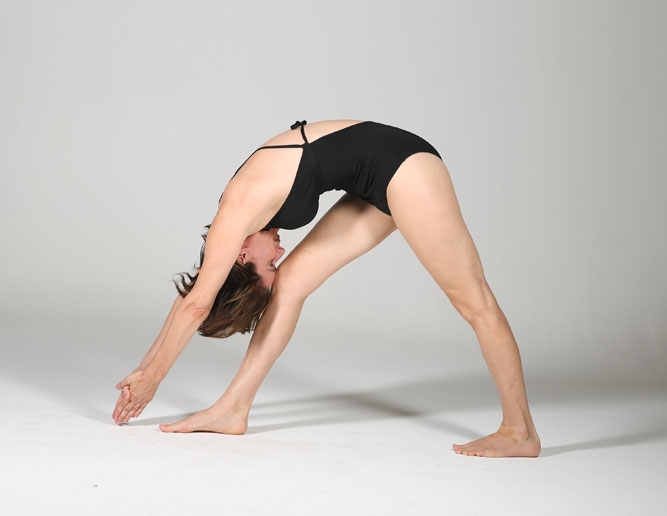
Standing Separate Leg Head to Knee
Dandayamana-Bibhaktapada-Janushirasana
Deep compression of the front side of the body from chin to knee. Stimulates thyroid, parathyroid and thymus glands. Compresses internal organs of the abdomen. Increases flexibility of spine, hips and legs.
Tip: Keep the chin tucked to compress the neck, and touch the forehead to the knee. It is ok to bend the front knee!
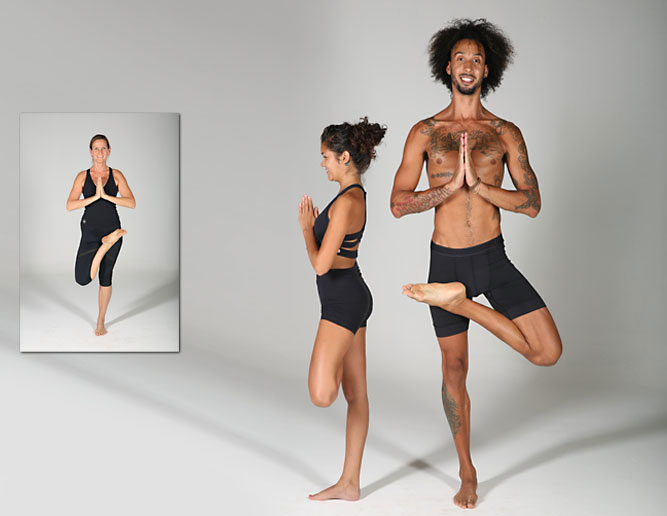
Tree
Tadasana
Improves alignment, balance and posture awareness. Strong hip and knee opening posture. Prepares body to sit in lotus position.
Tip: Don’t rush to let go of the foot. The hip and knee flexibility must come first. Patience.
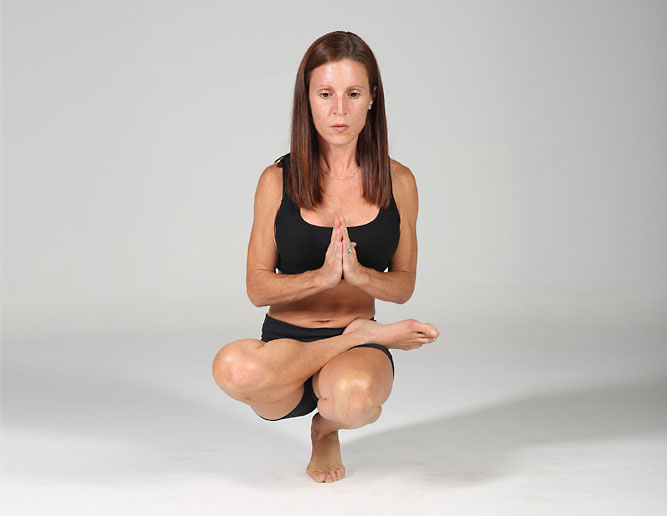
Toe Stand
Padangustasana
Opens knees and hips. Builds mental focus and patience. Improves balance and posture.
Tip: Keep your gaze on the floor to help with stability and balance.
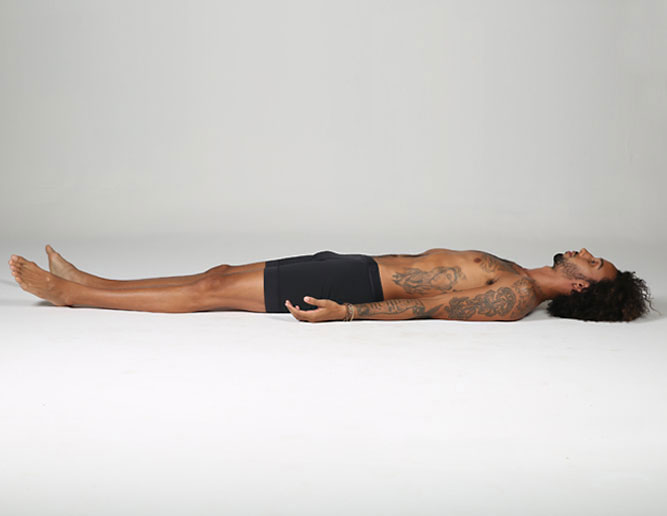
Corpse Pose
Savasana
Full body relaxation posture. Returns breath and circulation to normal. Teaches stillness, patience and mediation. Allows maximum circulation of the blood between postures. Releases the tourniquet effect created by compression postures. Relaxing and energizing posture.
Tip: Let your body feel heavy, and empty your brain of thought. Just observe your breath.
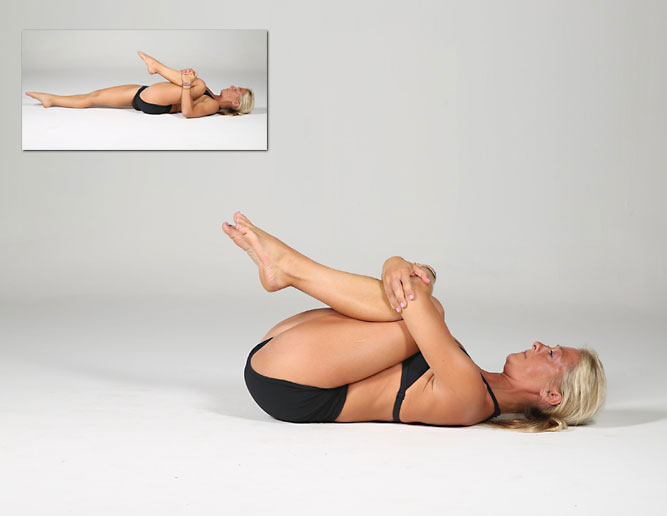
Wind Removing
Pavanamuktasana
Opens hips. Compression of lower abdomen and colin. Strengthens neck flexors and lengthens spine. Increases spinal, hip and knee flexibility. Stimulates digestion and elimination.
Tip: Pull knee toward shoulder, avoiding front of rib cage.
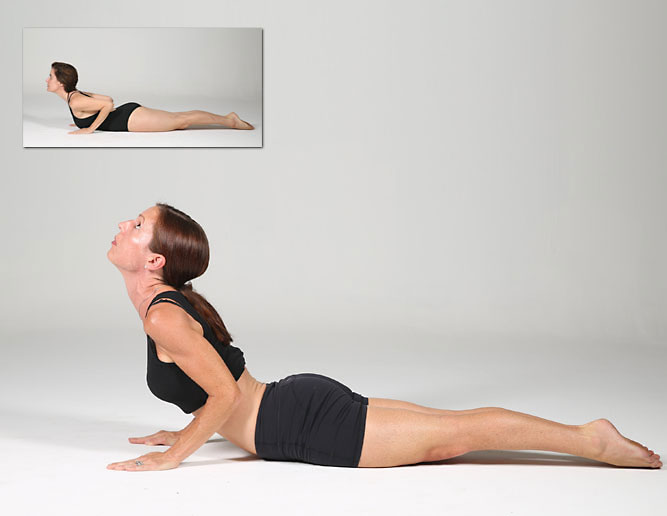
Cobra
Bhujangasana
Best posture to increase lower spinal strength and flexibility. Improves posture and prevents hunchback.
Tip: Keep legs strong and elbows in tight to isolate the lower spine.
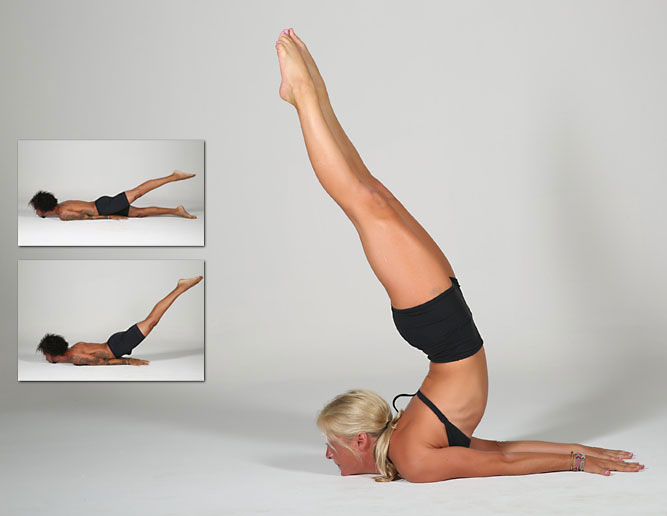
Locust
Salabhasana
Strengthens upper spine and opens elbows and wrists. Tones gluts, hamstrings and calves. This is the “yoga butt” posture!
Tip: Keep the focus on lengthening the legs with the knees locked. Use the gluts to lift.
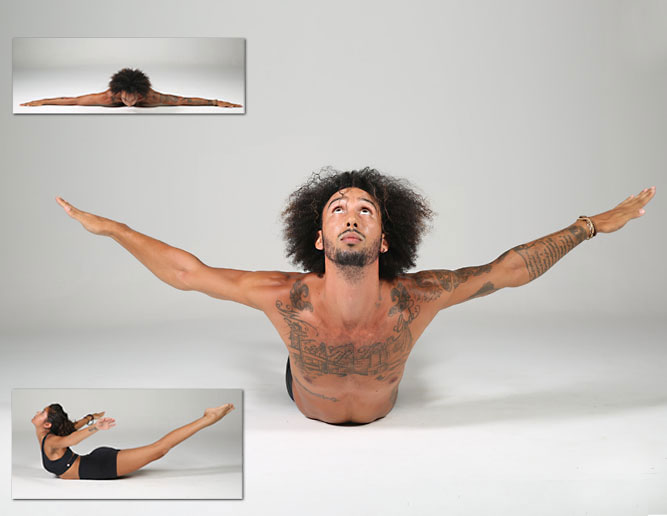
Full locust
Poorna-Salabhasana
Increases strength of middle spine. Opens chest and neck. Corrects rounded shoulders and hunchback.
Tip: Lift legs and chest equally, to target the middle spine.
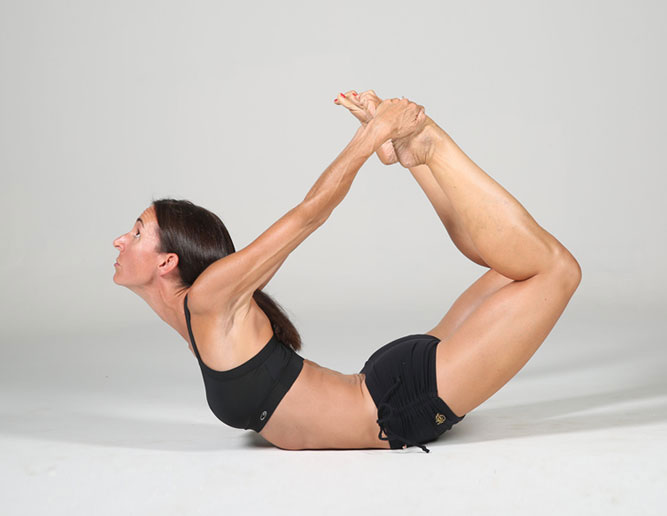
Bow
Dhanurasana
Increases strength and flexibility of entire spine. Opens chest, lungs, shoulders and neck. Stretches quads and strengthens gluts and hamstrings.
Tip: Grip with the fingers and let the arms and shoulders relax. Let the kick do the work.
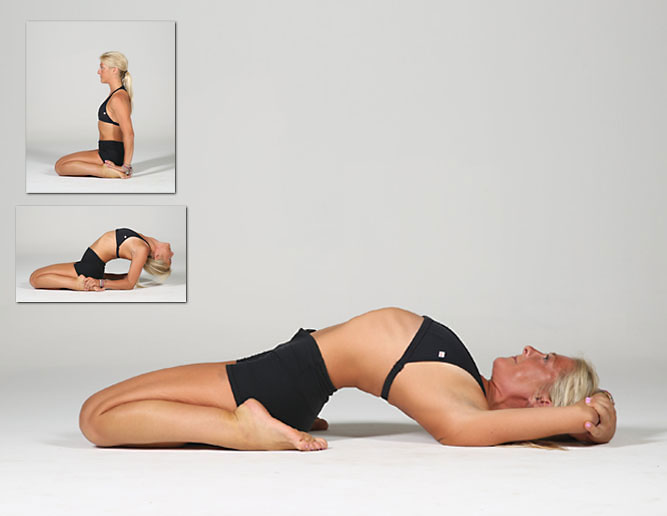
Fixed Firm
Supta-Vajrasana
Healing for the ankle, knee and hip joints. Improves flexibility of the lower and middle spine. Stretches the abdominals and opens front side of body in preparation for camel posture.
Tip: Go slow with this posture and listen to your knees. If they hurt, separate the knees and don’t lie back until the hips are comfortably touching the floor.
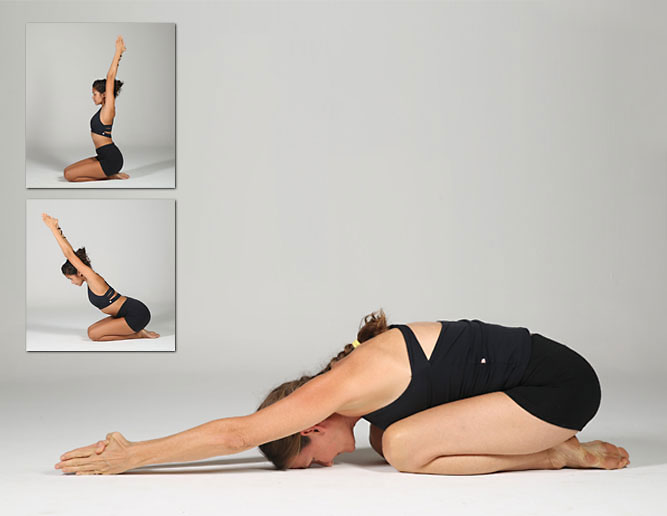
Half Tortoise
Ardha-Kurmasana
Increases flexibility of hip and shoulder joints. Creates traction of the spine and stretches the latissimus dorsi and tricep muscles. Powerful stretch of the lower lungs, alleviating asthma symptoms. Relieves neck and shoulder tension. Creates a relaxation response in the central nervous system, alleviating stress and anxiety.
Tip: This posture takes time. With regular practice, your forehead will touch the floor before your hands, and your hips will sit on your heels.
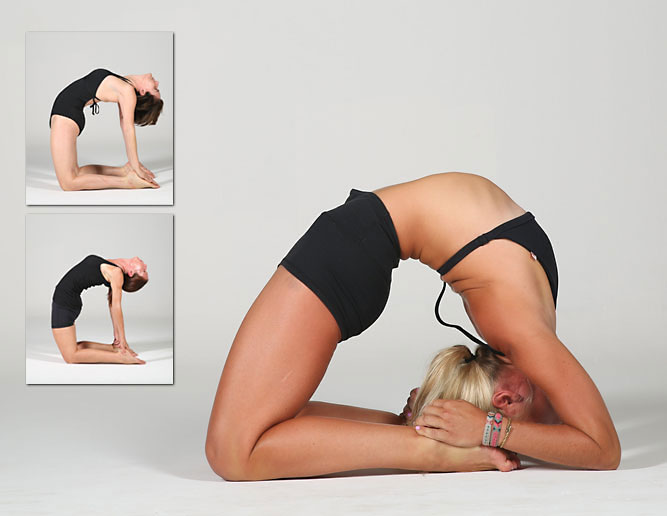
Camel
Ustrasana
Deepest backward bend of the Bikram series and the most healing posture for the spine. Compression of the spine stimulates central nervous system, kidneys and adrenal glands. Front side stretching of abdominals, digestive system, hip flexors and ribcage. Improves spinal alignment and flexibility.
Tip: Improve your back bending flexibility in this posture by pushing your hips forward and lifting your chest. Allow head to drop all the way back.
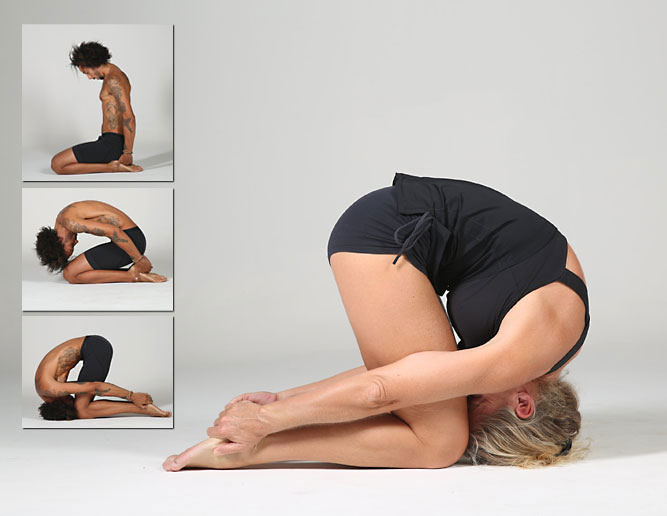
Rabbit
Sasangasana
This is the deepest forward bend of the series, providing maximum stretching between the spinal vertebra, including the lumbar area. Increases elasticity, mobility and flexibility of the spine and surrounding soft tissues and muscles. Relieves tension of the neck, shoulders and back.
Tip: The grip is important to ensure that your fingers don’t slip. In order to protect the cervical spine, never move your head once you are in this posture.
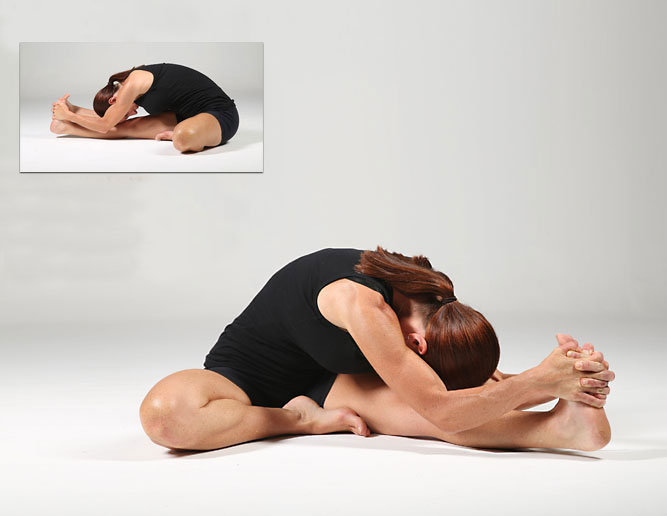
Head to Knee
Janushirasana
Rounded spine forward compression posture. Stimulates thyroid, parathyroid, thymus and intestines, while stretching spine and sciatic nerve. Improves flexibility of hamstrings, achilles tendon, groin, hips, spine, shoulders. Stimulates the immune and lymphatic systems.
Tip: The forehead must touch the knee for the compression to happen. It is ok to bend the knee.
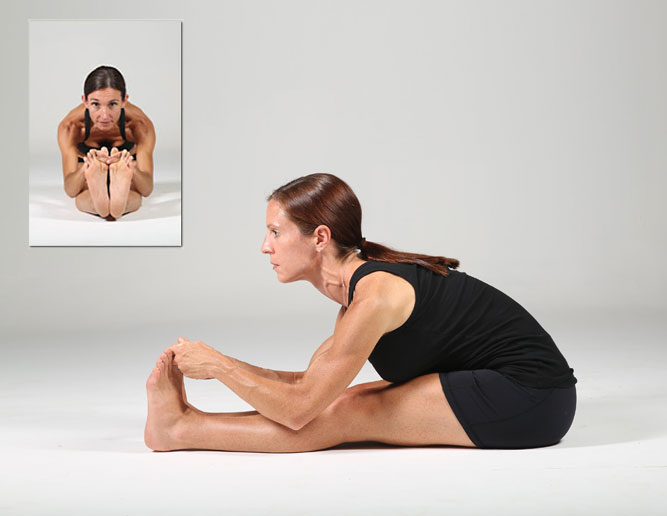
Stretching
Paschimotthanasana
Deep hamstring and spine stretch. The body is fully warmed and prepared for this final stretch. Strengthens quads, biceps and triceps.
Tip: It is ok if you cannot yet lock your knees, as long as you feel the stretch on the back of the legs. Pull on the toes and lift the chest, even if your knees are bent.
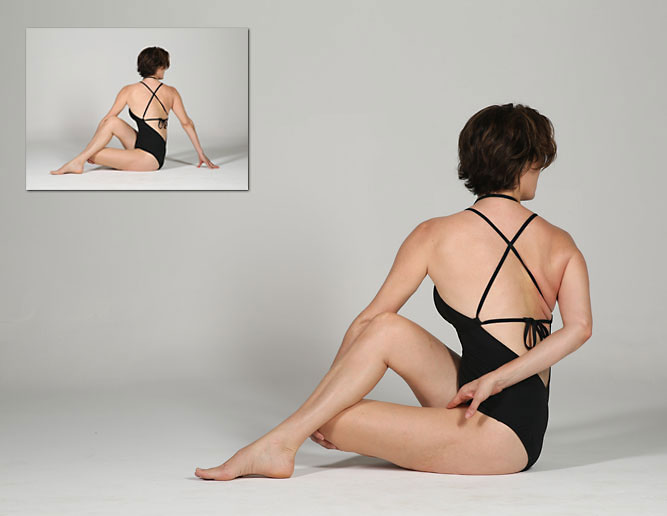
Spine Twisting
Ardha-Matsyendrasana
Deepest twisting posture for the spine. Increases flexibility of hips, shoulders, elbows and the entire spine. Increases circulation and removes tension in the spinal tissues.
Tip: Keep both hips flat on the floor to keep your spine straight.
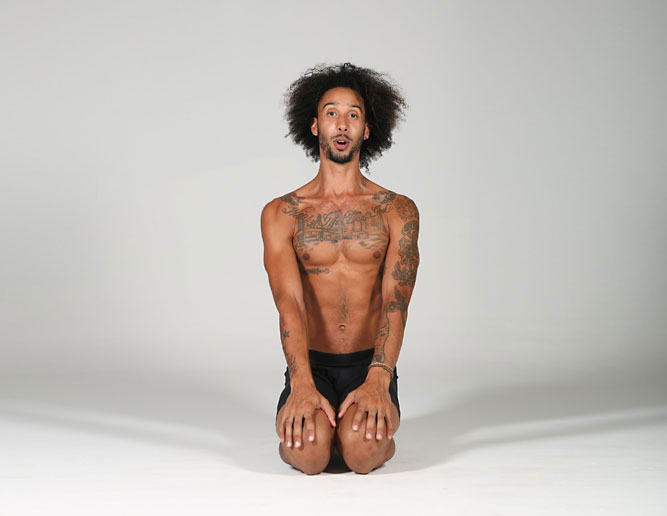
Blowing in Firm Posture
Kapalbhati in Vajrasana
Strong mouth exhales begin to cool the body and strengthen the abdominal muscles.
Tip: The strength of the exhale comes from snapping the belly in.

